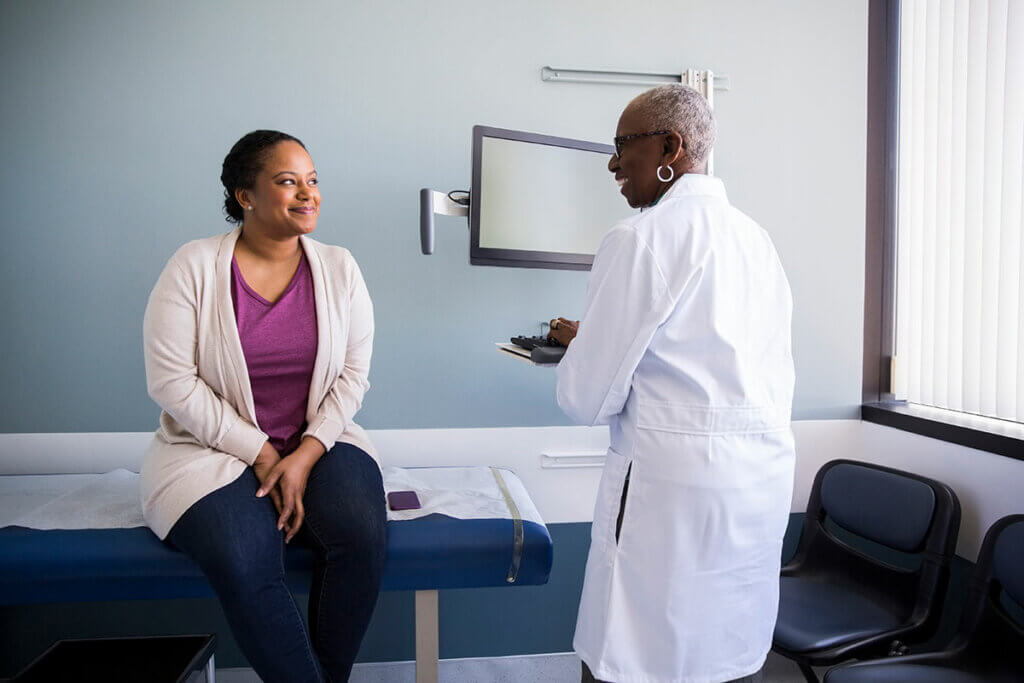Combat the gender pain gap
Research suggests that women experience more chronic pain than men. Yet many healthcare providers downplay or undertreat their symptoms—leading to the gender pain gap. Learn effective ways to advocate for yourself and get the pain relief you need.

Throbbing. Burning. Aching. Stinging. Stabbing. There are many ways to describe pain — and many ways it can affect your life.
About 20% of Americans have chronic pain. Sometimes the cause of the pain can be seen with medical imaging. (Think: a broken leg on an X-ray.) But other times, pain comes from an injury or illness that may not be visible or even known to the patient. And unfortunately, pain seems to play favorites.
“It’s clear that the burden of pain is greater for women than for men,” says psychologist Roger Fillingim, Ph.D. Fillingim is director of the Pain Research and Intervention Center of Excellence at the University of Florida. Studies suggest that women suffer from chronic pain more often than men. And they report a higher number of pain sites on their bodies.
Despite how common pain is, healthcare providers tend to underestimate and undertreat pain in just about everyone — especially women. For example, in a study, clinicians were asked to rate the level of pain in male and female patients. They were much more likely to think the women’s pain was less than the men’s. Doctors also thought women were exaggerating their symptoms more often. As a result, they were less likely to suggest treatment for the women. This is known as the gender pain gap.
“It’s unclear how aware providers are that they hold these biases,” says Fillingim. “But I’m pretty confident they are at least part of what’s driving the disparities in pain treatment.”
Why sex differences in pain exist
Research on this topic is still in its early stages. But anatomical, hormonal, and genetic differences between men and women likely play a role. For example, pain from menstruation, pregnancy, and childbirth affects women in years when many men may be pain-free. And more women than men have anxiety and depression. Both conditions raise the risk of having chronic pain.
“When you feel anxious, it puts you into fight or flight mode,” says Daniel Ginn, D.O. Dr. Ginn specializes in pelvic pain disorders and is a clinical instructor of Obstetrics and Gynecology at the David Geffen School of Medicine at UCLA. “That trapped, scared feeling enhances physical pain.”
Women are also more likely to talk about their pain. And they’re more likely to seek help for it. In response, healthcare providers may decide that women are feeling things as painful that shouldn’t be painful. “They may think, ‘We just need to pat her on the head and tell her to deal with the situation,’” says Fillingim.
Frustrating interactions such as these can cause a vicious cycle: Undertreated women want to be taken seriously. So they may exaggerate their pain to the next doctor they see. That can then lead to more bias against women in healthcare workers.
How to communicate your pain effectively
Teaching healthcare providers how to overcome their biases will make the biggest difference in improving pain management for everyone. That won’t happen overnight. But that doesn’t mean you have to keep suffering. Use these strategies to improve your odds of getting the pain relief you need.
1. Book extra time with your doctor
Diagnosing a pain condition takes great attention to detail. In his pelvic pain practice, Dr. Ginn takes 45 minutes to evaluate each new patient. What if your primary care physician won’t book an extra-long session? Ask if you can split the task into 3 appointments to:
- Give a history.
- Have an exam.
- Do tests and plan your treatment.
“Make sure you book the appointment for pain. And don’t try to tack it onto your annual physical,” says Dr. Ginn. There isn’t enough time at a physical to fully address pain. Trying to cram it in could result in it being treated as a minor issue or an afterthought.
Need help finding a specialist who meets your needs? The Wellframe app can help you find in-network providers and book appointments. This digital health management app is offered as a benefit by many health plans. To find out if you’re eligible for Wellframe, reach out to your health insurance provider.
2. Write up your pain history
Pain is often caused by a combination of issues, not a single event, says Dr. Ginn. A doctor can more easily diagnose you if they have:
- A detailed list of your illnesses and injuries.
- A record of when your pain began.
- Descriptions of how your pain has changed over time.
Writing the history before your appointment is key. It helps you remember all the details. More information helps your doctor connect the dots.
3. Bring a friend
Have a pal you trust? Bring them along to take notes and offer support. “They can help recall information and redirect the provider if that’s necessary,” says Fillingim.
4. Share what you’re worried about
Are you feeling that you won’t be taken seriously due to your sex or race? Say so at the beginning of your appointment. “I always appreciate when a patient says, ‘I want to tell you upfront, I have not felt like I’ve had good connections with doctors before because they didn’t listen to me or didn’t respect my story.’ I take a lot of stock in that,” says Dr. Ginn.
5. Point to your pain with 1 finger
The more specific you can be about what hurts, the more likely your doctor will be able to help. Try not to motion with an open hand over a general body part. Instead, use your pointer finger to show your doctor exactly where the pain feels worst. Then use as many descriptive words as you can to explain yourself. “Is the pain constant? Or does it come and go? Is it sharp? Is it stabbing? Is it dull? Those are all the things that I’m trying to get out of a patient,” says Dr. Ginn.
6. Be open and honest
Embarrassment and fear are the enemies of a successful medical workup. It’s normal to find it hard to talk about certain topics, such as pain during sex. Anxiety also leads some patients to not share all their symptoms. For example, if they’re worried their pain is a sign of cancer, they might not want to hear the diagnosis. Some patients also feel shy about taking up too much of a doctor’s time.
Do your best to push past these hurdles. Speak freely for however long it takes. “A lot of women will say, ‘This may be TMI but …’ I’m a gynecologist. Nothing is off-limits,” says Dr. Ginn. “I’m here to listen. Patients just need to be willing to talk about it.”
7. Think about seeing a specialist
It’s always a good idea to start with your general practitioner or primary obstetrician-gynecologist. But remember that it’s okay—and totally normal—to ask for a referral to a specialist. That’s especially true if you don’t feel your pain has been addressed.
“You may need to travel to find the level of expertise your problem requires,” says Dr. Ginn. But the travel time will be worth it if you find someone who helps you get the relief you deserve. You have options to combat the gender pain gap, and get the right treatment.
Sign up for the Well & Wise newsletter!
Interested in receiving more information on managing your conditions and healthy living? Sign up for our monthly Well & Wise newsletter to get helpful articles and insights right in your inbox!
